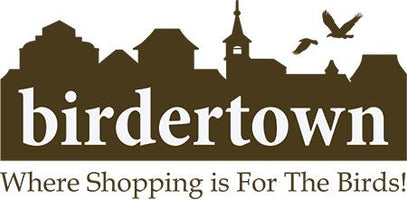
A Guide to Attracting Finches to Your Backyard
Finches are a favorite type of bird for many birdwatchers. You will find seventeen different types of finches in North America. Perhaps the most popular is the goldfinch, known for its beautiful bright yellow color contrasted with black and white wings. Other types include house finches, purple finches (which aren’t actually purple), and a variety of grosbeaks (blue, rose-breasted, black-headed, and more).
With so many different types of finches, it is understandable why they can be one of the most popular types of birds that people want to draw to their yards. If you want to see the vibrant colors of finches from your windows, there are a number of things that can be done to attract them to your home.
Pick the Best Type of Feeder
While finches are not overly picky when it comes to feeder type, there are certain types that are more equipped to cater to this type of bird. Finches tend to be relatively smaller birds. They also often travel in fairly large flocks. Thus, finch feeders are great for accommodating many of these birds.
If you have a lot of finches, you may even want to opt for a triple tube feeder! In general, tube feeders are great for finches because they provide lots of seed ports with places to perch. Mesh sock feeders are also great choices. The small size of finches allows them to easily access mesh sock feeders whereas larger birds aren’t able.
Pick the Best Type of Seed
Finches primarily eat birdseed. However, as smaller birds, they need seeds that are best equipped for them to eat with their small beaks. The best type of birdseed for finches is Nyjer thistle seed. This seed is optimal for goldfinches, purple finches, and many other types of smaller songbirds.
Another great option for finches is this blend of thistle seed and fine sunflower chips. Again, the key is to provide nutritious food for the finches that is also the perfect size for them to easily eat. This blend provides a great mixture of proteins, fats, and fibers necessary for finch nutrition.
Provide a Place for Finches to Make Their Homes
Finches will construct their nests in a variety of different types of plants. Evergreen trees like spruce and pine are great for allowing them to find shade and safety, particularly in the winter. However, many finches prefer smaller trees when building nests like dogwood, elderberry, and buttonbush. Having a mixture of these plants can provide them with the best of both worlds.
Of course, those wanting to attract goldfinches will note that they tend to build their tiny cup-shaped nests in areas where branches meet. Thus, favoring the smaller trees and shrubs is best if you want to primarily attract this specific type of finch that tends to be very popular with backyard birders.
Make Your Yard Safe for Finches to Thrive
As small birds, finches are particularly vulnerable to many things outdoors. One of the biggest threats to finch safety is cats. In fact, domestic cats are a huge threat to many species of birds. Thus, if you own a cat, consider keeping it inside only in order to provide some protection for songbirds in your area.
Another things that can be dangerous to finches is poisons such as pesticides. Keeping your yard more natural and pesticide free will have a doubly beneficial effect for finches. First, it allows more insects – an important food for many birds – to thrive. Secondly, you won’t have to worry about finches accidentally ingesting pesticides and falling ill. These are two critical steps to protect the finches you do attract to your yard.
If You Love Finches, You’ll Love Birdertown!
We just adore watching different finches flutter about the yard. If you are a finch fan, you will love Birdertown as we make it easy to get all your finch supplies in one place. From finch feeders to birdseed and many other things, you’ll find everything bird-related you could imagine and more at our shop. Remember to keep us in mind for all your bird watching supplies!
